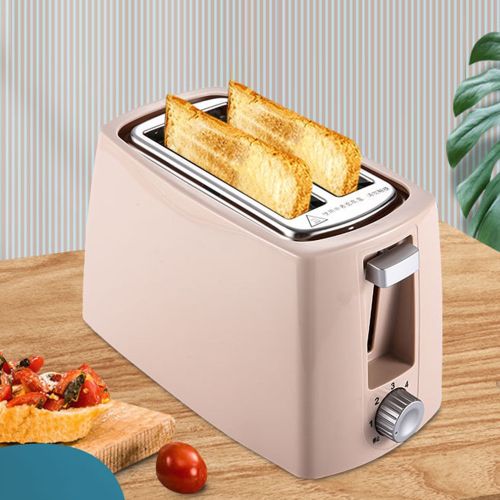If you’re thinking about a career in nursing, you have a lot of possibilities. A job as a practical nurse, also known as a licensed practical nurse (LPN), is one of the most common options.
In the United States, there is a developing nursing shortage that has a significant impact on the lives of Americans. The demand for care is outstripping the availability of skilled nurses.
A growing emphasis on preventative medicine, as well as the rising prevalence of chronic health disorders like diabetes and obesity, is necessitating more specialized health care for an aging baby boomer population.
Practical Nurse employment is expected to grow by up to 9% through 2030, producing around 63,000 new jobs, according to the Bureau of Labor Statistics.
Here is a brief overview of the practical nursing program.
Table of Contents
- Who Is a Practical Nurse Or Licensed Practical Nurse?
- Practical Nurse Job Description
- Why Become A Practical Nurse?
- What Are The Requirements For Becoming A Practical Nurse?
- How To Become A Practical Nurse
- How Much Does A Practical Nursing Program Cost
- Where Do LPNs Work?
- How Long Does It Take To Become A Practical Nurse?
- Licensed Practical Nurse Salary?
- Conclusion
- Frequently Asked Questions
- References
- We Also Recommend
Who Is a Practical Nurse Or Licensed Practical Nurse?
A practical nurse, also known as a licensed practical nurse (LPN), undertakes a wide range of non-clinical medical care responsibilities. Basic medical and nursing care, such as ensuring patients’ comfort, inserting catheters, checking blood pressure, providing medication, monitoring vital signs, and reporting patients’ status to registered nurses and doctors, are all common LPN responsibilities. LPNs may also do operations such as blood draws and injections in specific instances. The following is a list of LPN tasks and responsibilities.
Practical Nurse Job Description
- After an appointment or discharge from a healthcare institution, assisting RNs in educating patients and family members on how to care for certain health issues or injuries.
- Blood, urine, and other samples are collected.
- Routine laboratory testing is carried out regularly.
- Taking the temperature, blood pressure, and other vital signs of a patient.
- Changing a bandage or inserting a catheter are examples of fundamental patient care tasks.
- Keeping an eye on the patient for changes in their health, mood, or behavior, and reporting any concerns to an RN or the on-duty physician.
- Services rendered to patients are documented in their medical records.
- Getting patients ready for their treatment, explaining treatments required by their doctors, and listening to any concerns or complaints they may have.
- Providing medication to patients as directed by their doctors.
- Immunizations are given to patients.
- When patients come, obtain their medical histories.
Why Become A Practical Nurse?
A practical nurse is a person who looks after others, supports doctors and registered nurses, and works in a range of settings such as hospitals, clinics, and nursing homes.
The following are five compelling reasons to pursue a career as a Licensed Practical Nurse:
- Flexible scheduling; hospitals, nursing homes, and in-home care allow you to work a variety of shifts from early mornings to late evenings.
- Because of the high demand for nurses, nursing provides a constant income.
- You can work in a variety of sectors, including psychiatric, surgical, hospice, and home health, depending on your specialization.
- It is a hands-on vocation that allows you to demonstrate your knowledge and talents.
- Opportunities for growth; nursing provides a lot of training so you can earn the experience you need to go back to school and eventually become an RN.
Consider a career in Practical Nursing if you are patient, desire to help others, and love the satisfaction of seeing a patient’s growth.
What Are The Requirements For Becoming A Practical Nurse?
Just like every other career, there are certain things you must possess before embarking on the journey of becoming a licensed practical nurse. They are however listed below.
- You must possess a GPA of 2.0 or higher.
- Excellent communication skills, to correctly report to other medical team members as well as communicating with the patient and family members.
- Empathy for people in difficult situations.
- Excellent problem-solving skills, as you will need to be in the operative mode most of the time, searching for underlying health problems.
- You must pay attention to even the minutest detail. You will need to be very accurate on medication dosages as well as learning about the patient’s history.
How To Become A Practical Nurse
You must enroll in nursing board-approved program in your state to begin your career as a practical nurse. You can complete your practical nursing program in as little as 48 weeks if you enroll in an expedited degree program. Earning a practical nursing diploma is one of the most effective paths to a successful job in the healthcare profession when you compare the time spent in school to long-term earning potential.
Working for a new job as a licensed practical nurse appears far more feasible when broken down into individual phases, just like any other long-term goal.
1. Enroll in a Practical Nursing Program
Enrolling in a practical nursing program at a recognized institution or university is the first step toward becoming an LPN. Earning a practical nursing diploma will take dedication and hard work, but it’s a sector that’s open to anyone who is willing to put in the effort. Admission to the Practical Nursing Program, for example, needs simply a high school certificate or GED, as well as passing a background check.
2. Earn Your Practical Nursing Diploma
You might expect a few general-education requirements in your practical nursing program to help you develop critical-thinking and problem-solving skills. The majority of your practical nursing program, on the other hand, will be devoted to polishing the skills you’ll need to secure an entry-level job as a practical nurse in a range of healthcare settings. You’ll discover more about how the human body functions through studying anatomy, physiology, and nutrition, as well as basic nursing and healthcare principles.
You’ll move on to more specialized study areas including adult-health nursing, geriatric nursing, and maternal-child nursing after you’ve mastered the fundamentals. This part of your practical nursing program might help you figure out what kind of work environment appeals to you the most and which opportunities you should seek for after you complete your diploma.
Consider colleges or institutions that provide students job placement aid once they complete their credentials when determining where to enroll in a practical nursing program. When you have someone who can assist you transfer your classroom abilities to the real world, it adds a lot of value to your education.
See also: 20 Best LPN Classes Online In 2024 | Paid & Free
3. Pass the National Council Licensure Exam (NCLEX-PN)
You must pass the NCLEX-PN exam after completing your practical nursing program to demonstrate that you can safely and efficiently execute your duties as a licensed practical nurse. Because the NCLEX is a computer-adaptive test, a correct response will lead to a slightly more difficult question, while an erroneous answer will lead to a slightly easier question. Every time you answer a question, your total knowledge assessment becomes more precise.
The exam consists largely of multiple-choice questions, with a few fill-in-the-blank and drag-and-drop questions thrown in for good measure. The length of the exam is determined by how quickly you respond to the questions. While the actual number of questions fluctuates from year to year, you should expect between 100 and 200 questions and five hours to complete the exam (including two scheduled breaks).
READ ALSO: NCLEX Scholarships Application, Eligibility and Worth 2024
4. Get Licensed On a State-By-State Basis
After passing the NCLEX-PN, you may need to take extra procedures to get licensed in the state where you plan to work, such as completing a background check. Practical nurse licensing requirements differ by state; the National Council of State Boards of Nursing can provide more information on each states’ requirements.
How Much Does A Practical Nursing Program Cost
The tuition charge is the most important consideration while choosing a practical nursing school. The cost of the LPN program is the first question that comes to mind for any applicant. The cost of an LPN program varies from one school to the next. The amount charged is determined by the geographical area and state. Certain LPN schools charge a low tuition rate of $4000, however other institutes may charge as much as $33,000. Another issue that comes up is how much does LPN school cost. In addition to tuition, there are costs for books, transportation, and boarding for hostlers, among other things. The amount charged often varies from $7,000 to $10,000.
Where Do LPNs Work?
Licensed practical nurses are an integral part of our healthcare system (LPNs). While your mind might immediately jump to a busy hospital when imagining where nurses work, LPNs actually have the opportunity to apply their skills in a wide variety of work environments. Here is a list of places where LPNs can work:
1. Nursing and residential care facilities
Licensed practical nurses in different states will have varied responsibilities. Some states require LPNs to start intravenous (IV) drips and administer drugs, whereas others do not allow LPNs to do so. An experienced licensed practical nurse will manage and lead a team of LVNs or LPNs in some areas.
2 Hospitals
According to the BLS, hospitals hire a large number of LPNs to help them with their daily tasks. Occupational health nurse, medical assistant, or nursing assistant are all possible titles.
3. Private practice
While the majority of LPNs work in nursing homes and long-term care institutions, they can also work in a variety of other settings. You may have an easier time landing a position with a private practice if you have certificates or training in a particular field such as gerontology, pediatrics, dermatology, or any number of medical specializations. LPNs who work in physician offices have a mix of medical and administrative responsibilities.
4. Home health agencies
LPNs who work for home health services visit patients in their homes to assist with basic care such as medicine administration, supply delivery, wound treatment, and patient care.
5. Government
Federal, state, and municipal government institutions, such as state-owned and run hospitals and clinics, employ a small number of LPNs. LPNs working in these settings do similar duties to those found in non-government hospitals, clinics, and agencies. If you are fortunate enough to work as an LPN for a government organization, you will most certainly make more than the national average.
How Long Does It Take To Become A Practical Nurse?
The most common route to becoming an LPN is to complete a certification program, pass the NCLEX-PN, and then look for work. Depending on whether you attend full-time or part-time, practical nursing programs normally span one to two years. You should budget at least one month of preparation for the NCLEX-PN in order to pass it on your first attempt. If you don’t pass on your first try, you’ll have to wait 45 days to try again. It will take anything from a year to a little more than two years to complete all of the prerequisites necessary to begin working as an LPN.
READ ALSO: 13 Affordable Online LPN to RN Programs for Nurses
Licensed Practical Nurse Salary?
According to the Bureau of Labor Statistics, licensed practical nurses are in high demand in the United States. The better your income potential as an LPN, the more experience you have. In 2018, LPNs in the United States earned an average yearly pay of $46,240.
The pay of licensed practical nurses is also influenced by their skills. Long-term care, geriatrics, wound care, home health, and hospice LPNs may earn different earnings than those in pediatrics, surgery, and family practices.
Licensed practical nurses have less education than other nurses, but they are nonetheless vital to their patients’ health. If you’re eager to start working in the medical industry, this could be the perfect place to start.
Conclusion
The quickest way to become a nurse is to enroll in a practical nursing program at a recognized school. The amazing thing about becoming a practical nurse is that you can get your diploma or certificate in a year. Furthermore, a practical nursing/LPN career in the nursing field is a promising one, given the predicted increase in job opportunities and earnings.
Frequently Asked Questions
A practical nurse, also known as a licensed practical nurse (LPN), undertakes a wide range of non-clinical medical care responsibilities.
It depends on whether you attend full-time or part-time, practical nursing programs normally span one to two years.
The cost of the LPN program is the first question that comes to mind for any applicant. The cost of an LPN program varies from one school to the next. The amount charged is determined by the geographical area and state. Certain LPN schools charge a low tuition rate of $4000, however other institutes may charge as much as $33,000.
The average annual salary for Licensed Practical Nurses (LPN) and Licensed Vocational Nurses (LVN) is $50,090 per year ($24.08 per hour), according to 2020 data from the Bureau of Labor Statistics (BLS).





